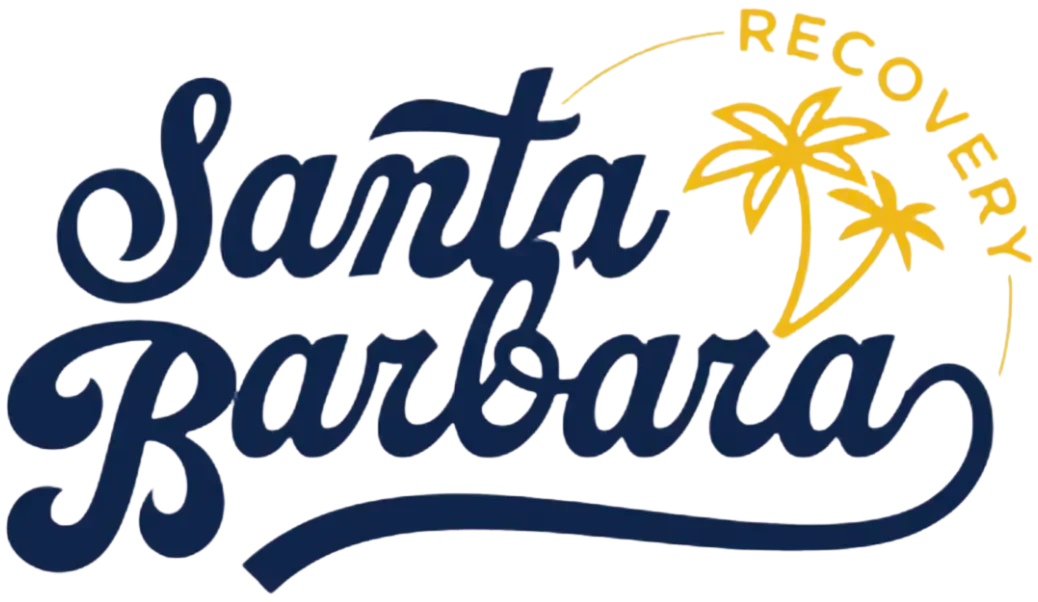Spending addiction treatment utilizes seven evidence-based methods that effectively target your compulsive purchasing behaviors. Cognitive Behavioral Therapy (CBT) remains the most empirically supported intervention, addressing irresistible impulses through psychoeducation and behavioral experiments. Group therapy and peer accountability systems provide structured environments with superior outcomes compared to individual treatment alone. Motivational interviewing, financial counseling, medication management for severe cases, relapse prevention planning, and digital therapeutic tools that collectively address the diagnostic criteria characterizing this disorder and extensive recovery strategies.
Cognitive Behavioral Therapy for Compulsive Spending

Cognitive Behavioral Therapy (CBT) has emerged as the most empirically supported treatment for compulsive spending disorder, with randomized controlled trials demonstrating significant symptom reduction compared to waitlist and psychoanalytic controls. You’ll work with your therapist to interrupt problematic buying episodes and restructure maladaptive beliefs about money, self-worth, and spending behaviors. Treatment components include psychoeducation on triggers, behavioral experiments targeting high-risk situations, and skills training for healthy coping mechanisms. Your therapist will implement expense tracking techniques and individualized goal setting to bolster treatment outcomes. Both individual and group CBT formats yield clinically meaningful change, with improvements maintained at six-month follow-up. Studies show high treatment acceptability and retention rates, with sustained gains in reduced compulsive spending urges and time spent shopping. CBT also addresses irresistible impulses and frequent preoccupation with buying that characterize the disorder’s diagnostic criteria. Prior to recent studies, there were no published psychotherapy treatment investigations specifically examining interventions for compulsive buying behaviors. Research indicates that group psychotherapy currently represents the most promising treatment approach for compulsive buying disorder based on available evidence.
Group Therapy and Peer Support Programs
When you’re recovering from compulsive buying disorder, group therapy and peer support programs provide evidence-based interventions that utilize collective accountability and shared experiences. These structured environments facilitate cognitive-behavioral modifications through peer accountability systems, formalized support programs like Debtors Anonymous, and sustained group engagement protocols. You’ll benefit from both professional group CBT sessions that demonstrate significant symptom reduction and peer-led meetings that offer long-term behavioral reinforcement mechanisms. Group members often practice mindfulness techniques together to strengthen impulse control and develop better awareness of spending triggers. Participants can also engage in simplicity circles as an additional therapeutic community approach that complements traditional group therapy formats.
Peer Accountability Systems
Peer accountability systems represent a cornerstone of evidence-based spending addiction treatment, utilizing group therapy and peer support programs to create structured environments where individuals with shared experiences provide mutual support and oversight. These systems greatly reduce relapse rates while improving treatment adherence and abstinence outcomes through collective accountability mechanisms.
Reciprocal mentorship models amplify self-efficacy and coping strategies, benefiting both mentors and participants. Structured meeting schedules with established group norms foster routine behavioral changes and minimize isolation. Community integration supports facilitate practical advice sharing and judgment-free discussion of financial triggers. Members develop a strong sense of mutual accountability where they actively monitor each other’s progress and provide honest feedback to prevent setbacks. Virtual group meetings enable broader access to peer support networks while maintaining the essential accountability framework that drives recovery success.
Group environments demonstrate superior outcomes compared to standard treatment alone, particularly among high-recidivism populations. Participants report increased treatment satisfaction through shared milestones and collaborative goal-setting, with longitudinal studies confirming sustained benefits beyond initial recovery phases. The cost-effectiveness of peer support interventions makes these programs particularly valuable within comprehensive treatment systems.
Structured Support Programs
How effectively can structured group environments transform individual recovery trajectories in spending addiction treatment? Evidence demonstrates that manualized group therapy formats greatly reduce relapse rates while increasing abstinence outcomes compared to individual therapy alone. You’ll benefit from cognitive-behavioral therapy integration within group settings, which boosts both behavioral modification and mental health metrics.
Peer support programs provide vital social reinforcement, reducing craving intensity while increasing self-efficacy for long-term recovery. Multi family group programs address systemic factors contributing to financial addiction patterns. These structured environments establish consistent routines that disrupt impulsive spending behaviors through scheduled activities and fixed meetings.
Continuous case management within group frameworks guarantees early intervention during potential lapses. Virtual and in-person delivery options increase accessibility across diverse populations, while cultural competency adaptations demonstrate improved engagement rates and sustained recovery outcomes. Group therapy participants maintaining work and family commitments experience flexible scheduling that supports comprehensive recovery without sacrificing essential life responsibilities. PHP participants receive 6-8 hours of daily structured programming that intensifies therapeutic intervention beyond traditional outpatient settings. Research indicates that concomitant behavioral treatment is essential to effectively manage craving and compulsive behaviors that drive spending addiction patterns.
Long-Term Group Engagement
Something fundamental shifts when individuals commit to sustained group participation beyond initial treatment phases. Your long-term commitment to group engagement drastically improves recovery outcomes through continuous peer accountability and reinforcement of healthy financial behaviors. Research demonstrates that extended participation correlates with higher retention rates and decreased relapse incidents compared to short-term interventions.
Ongoing follow up support through regular group sessions maintains the therapeutic momentum established during initial treatment. You’ll benefit from continuous cognitive restructuring opportunities, refined coping mechanisms, and sustained social networks that prevent isolation. Meta-analyses confirm that individuals participating in long-term group programs show improved abstinence rates, heightened emotional regulation, and better total prognosis. Cost-effectiveness studies indicate that group therapy may provide comparable outcomes to individual treatment at potentially lower per-patient costs. This extended engagement creates lasting behavioral changes essential for sustained recovery from spending addiction disorders.
The safe and supportive environment fostered in these groups allows members to openly discuss their financial struggles without fear of judgment while receiving constructive feedback from peers who understand their experiences.
Motivational Interviewing to Build Treatment Readiness
While traditional confrontational approaches often trigger defensiveness and resistance in individuals with spending addictions, motivational interviewing (MI) creates a collaborative therapeutic environment that builds genuine readiness for change. This evidence-based intervention utilizes positive framing techniques to investigate your ambivalence about financial behaviors without judgment or coercion.
MI practitioners employ open-ended questions, reflective listening, and affirmations to elicit your intrinsic motivations for recovery. The process focuses on personal values alignment, helping you identify discrepancies between current spending patterns and core beliefs. Through evocation rather than education, you’ll verbalize your own reasons for change, strengthening commitment to recovery goals.
Research demonstrates MI’s effectiveness in addiction treatment, with studies showing 20% improvement in engagement rates. This collaborative approach fosters autonomy while building self-efficacy for sustainable behavioral modification. Meta-analyses of 93 studies involving over 22,000 participants reveal small to moderate effects of motivational interviewing across diverse treatment settings.
Financial Counseling and Educational Interventions

Financial counseling and educational interventions represent evidence-based components that directly address the cognitive and behavioral deficits underlying compulsive spending disorders. You’ll benefit from structured financial literacy training that teaches fundamental money management principles, budgeting skills development through standardized instruction methods, and trigger identification education that helps you recognize situational and emotional spending cues. These interventions work synergistically to build the practical competencies and self-awareness necessary for sustained recovery from pathological spending behaviors.
Financial Literacy Training
How effectively can structured education reshape your relationship with money? Financial literacy training demonstrates measurable efficacy in treating compulsive spending behaviors through evidence-based interventions. You’ll experience 25-40% improvement in post-training knowledge scores, with controlled trials showing 50% enhancement in financial behavior change among participants. Interactive methods combined with behavioral strategies like goal-setting produce the best outcomes for your recovery.
If you’re experiencing spending addiction, targeted education addresses specific triggers while building practical money management skills. You’ll see improved credit scores and 5-10% decreased delinquency rates following intervention. However, knowledge retention drops to 10-15% after one year without reinforcement, requiring additional sessions for sustained long term savings impact. Programs customized to your baseline literacy level and cultural background maximize therapeutic effectiveness in restructuring problematic spending patterns.
Budgeting Skills Development
Structured budgeting interventions form the cornerstone of effective spending addiction recovery, with clinical studies demonstrating 60-70% improvement in financial management behaviors among participants who complete thorough budgeting skills programs. You’ll develop essential categorization skills that distinguish needs from wants while establishing realistic monthly spending frameworks. Financial counseling provides individualized debt management guidance and introduces credit repair techniques alongside responsible borrowing strategies.
Implementation of discretionary spending limits creates protective barriers against impulsive purchases, which represent primary relapse triggers. You’ll utilize expense tracking applications that monitor daily spending patterns and identify high-risk emotional states or environmental cues. Regular budget reviews with counselors guarantee plan adaptability as your recovery progresses, while accountability partners provide external oversight for major financial decisions, reinforcing sustained behavioral modifications.
Trigger Identification Education
The cornerstone of sustainable spending addiction recovery centers on thorough trigger identification education, where you’ll develop critical awareness of internal and external cues that precipitate compulsive purchasing behaviors. Evidence-based interventions utilize structured self-assessment tools, including journaling and trigger mapping exercises, to distinguish between emotional triggers like stress and anxiety versus situational triggers such as sales promotions or social pressure. Financial counselors integrate mindfulness-based techniques with somatosensory awareness training to help you recognize physiological responses preceding spending urges. Role-playing scenarios and group discussions normalize experiences while revealing subconscious triggers. Research demonstrates that clients receiving targeted trigger education show drastically lower relapse rates and improved real-time coping strategies, ultimately reducing compulsive spending episodes and associated financial instability.
Medication Management for Severe Cases

When behavioral interventions alone prove insufficient for treating severe spending addiction, medication management becomes a vital component of extensive care. You’ll typically receive off-label antidepressants like SSRIs or bupropion, which target compulsive behaviors and comorbid mood symptoms. For treatment-resistant cases, your clinician may prescribe mood stabilizers such as topiramate or consider antipsychotic augmentation through polypharmacy approaches.
Your progress gets tracked using validated instruments, including the Compulsive Buying Scale and Hamilton Rating Scales. Medication dose adjustments occur based on symptom severity and tolerability profiles. Continuous safety monitoring remains essential, particularly with combination therapies that may cause weight gain or somnolence. This pharmacological approach strengthens your engagement in concurrent cognitive-behavioral therapy while addressing both addictive symptoms and underlying psychiatric comorbidities thoroughly.
Relapse Prevention Strategies and Planning
Although pharmacological interventions provide essential symptom stabilization, extensive relapse prevention strategies form the cornerstone of long-term recovery from spending addiction. You’ll need to identify and prioritize internal triggers like negative emotions alongside external triggers such as specific retail environments or social situations. Regular trigger list updates bolster prevention effectiveness through ongoing awareness training.
Building structured support networks through 12-step programs and therapeutic relationships increases accountability while reducing isolation-related relapse risks. You should develop emotional regulation techniques, including mindfulness meditation, which demonstrates strong associations with reduced cravings and improved impulse control.
External environmental planning involves creating detailed daily schedules that minimize idle time and establishing actionable exit strategies for high-risk scenarios. Professional emergency interventions should be prearranged, with post-relapse reviews identifying causative factors for strengthened future prevention protocols.
Digital Tools and App-Based Treatment Options
How can technology bridge the gap between traditional spending addiction treatment and continuous recovery support? Digital platforms offer 24/7 accessibility through mobile apps and telehealth services, eliminating geographic and scheduling barriers. You’ll benefit from real-time progress tracking tools, including sobriety clocks and personalized behavioral interventions custom-tailored to your specific triggers and patterns.
AI-powered analytics amplify treatment personalization by delivering customized motivational messages and identifying high-risk spending behaviors. These platforms provide adherence monitoring capabilities that generate detailed reports for clinician review, ensuring continuous professional oversight between sessions.
Virtual reality exposure therapy simulates controlled trigger scenarios, building resilience through desensitization techniques. Online peer support communities through platforms like Sober Grid reduce isolation while maintaining anonymity. Cost-effective digital therapeutics extend evidence-based treatment to underserved populations, integrating seamlessly with Electronic Health Records for all-encompassing care coordination.
Frequently Asked Questions
How Long Does It Typically Take to See Results From Spending Addiction Treatment?
You’ll typically see initial improvements within 4-6 weeks using evidence-based therapy approaches like CBT. However, the duration of treatment enormously impacts outcomes; 90 days minimum is recommended for sustained behavioral change. Most people experience stable recovery between 3-6 months, with measurable lifestyle improvements after 6 months. Your success rate increases vastly with longer engagement: treatments under 30 days show 30% success, while those exceeding 90 days achieve 70% or higher success rates.
What Is the Average Cost of Professional Treatment for Compulsive Buying Disorder?
Healthcare costs for compulsive buying disorder treatment vary considerably based on intervention intensity. You’ll typically pay $100-$200 per individual CBT session, with complete courses totaling $1,200-$4,000. Outpatient programs range $2,500-$10,000 over 12 weeks, while residential treatment expenses reach $10,000-$60,000 monthly. Group therapy offers lower-cost alternatives at $35-$75 per session. Treatment expenses are generally offset by preventing continued compulsive spending behaviors that often exceed professional intervention costs annually.
Can Spending Addiction Treatment Be Covered by Health Insurance Plans?
You can receive insurance coverage for spending addiction treatment, though accessibility depends on your plan’s recognition of the underlying diagnosis. Insurers typically cover treatment when compulsive spending’s diagnosed as Impulse Control Disorder or OCD under mental health benefits. Your coverage includes evidence-based therapies like CBT, medication management, and intensive outpatient programs. However, you’ll need prior authorization and must use in-network providers. Treatment accessibility varies by state Medicaid expansion and individual plan limitations.
Are There Specific Warning Signs That Indicate Treatment Isn’t Working Effectively?
Yes, you’ll notice specific warning signs when treatment isn’t effective. Persistent excessive spending habits despite intervention indicate poor treatment response. You may observe continued financial crises, mounting debt, or relationship deterioration. Non-adherence to financial counseling needs, frequent therapy absences, and dishonesty about spending behaviors signal treatment failure. Furthermore, you’ll see no measurable improvement in validated outcome measures, increased co-occurring mental health symptoms, and inability to maintain agreed-upon financial boundaries or budgeting skills.
How Do Family Members Best Support Someone During Spending Addiction Recovery?
You’ll best support recovery by offering emotional support through empathetic listening and non-judgmental communication, which reduces shame and defensiveness. Simultaneously, you should focus on encouraging financial accountability by establishing clear boundaries, participating in collaborative budgeting, and setting joint spending agreements. Active involvement in family therapy sessions, psychoeducation programs, and coordinating with treatment professionals drastically improves long-term outcomes while maintaining the balance between supportive involvement and individual responsibility.





